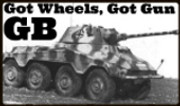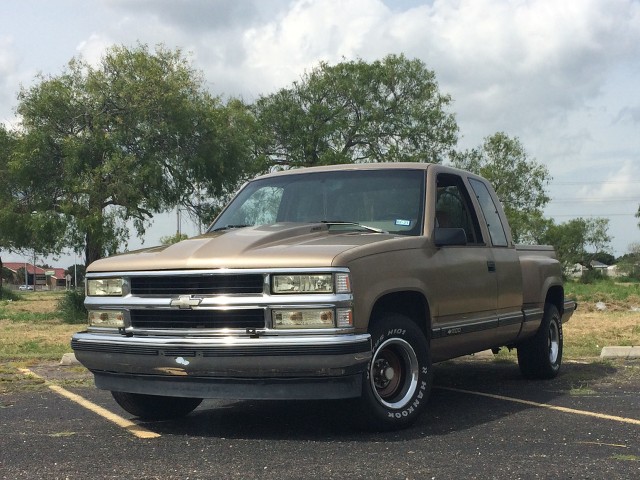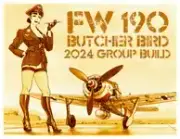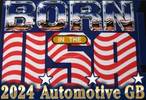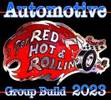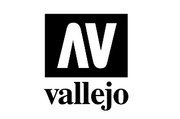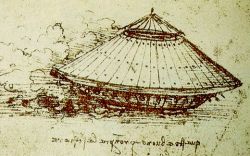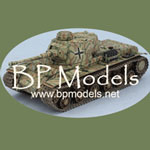Meng Minenraumer VsKfz 617 Build Review & Photos -Base Added
Feb 4, 2015 23:12:58 GMT -5
406 Silverado, DeafStuG, and 1 more like this
Post by afvfan on Feb 4, 2015 23:12:58 GMT -5
This is a build review of the Meng Minenraumer VsKfz 617 in 1/35 scale. The kit number is SS-001. I just completed my build and would like to share some insights and thoughts on it. Initial overall impressions were that it would be a fairly simple kit to work with. It only has a parts count of 267, 127 of which are involved assemblying the three wheels. The only non-plastic parts are the chain used for steering and a short section of copper wire (more on these later)**.

Take away the wheel parts, and this is what's left.
Molding is very good with only a hint of flash and some mold lines to clean up. There are a few ejection marks that are either easily taken care of or not in a visible location. Fit of the parts was mostly excellent with only a few exceptions.
** - A couple PE sets are available (Voyager and ET Model). They are inexpensive and recommended. I used the one from ET. It contains the same parts as the Voyager set, but was 35% cheaper.
The Build
Assembly starts with the upper hull. Though they are covered in this section, I highly recommend leaving the tie down
hooks and lift eyes off until right before the paint stage. These are fairly small and really easy to knock off and lose during
routine handling. This is also the stage where the PE is most welcome. You can replace the plastic molded engine screens
and covers and the airvent slats and armor plate, improvong the general look tremendously.


On the real vehicle the rear cover after the screens is actually a separate piece. Meng chose to mold it attached to the upper hull. I decided to cut it off which worked out well later in the build. The next few steps are straight foward. My only recommendation would be to leave the steering pointer and guard off
to be added later.

During this stage I also added weld beads around the intake covers and on the tow shackles (following original pictures). Meng did a great job on the welds around the shackles, but missed the weld on them.


The next few steps deal with the wheel and chain assembly. There are mold lines on the sides of the chain links that need to be dealt with. When mounting the feet to the chain links make sure you do not mix up the mounting pins (parts A17 and A18). Though they look very similar, they do not interchange....believe me! Meng wants you to attach the wheels at this time. I left them off to make painting easier.
It was here that I ran into the only real fit issue. I put the two halves on the wheel together (UNGLUDED) and test fitted the
chains. I found the rear wheel to be okay, but the two fronts were a different story. The chains could be forced on the wheels indicating a major fitting problem once paint was added. I ended up getting my dremel and thinning the back plate of the wheel considerably to allow a better fit. The chains need to move pretty freely in order to position them correctly once everything is assembled and painted.
The instructions also have you add the rear wheel assembly and steering chains at this time. If you chose not to cut the rear cover loose as previously mentioned, you will need to do so. If you followed my lead, you can leave them off for the time being.
They can be added after the paint is applied.
Remember I mentioned the chain and wire in the first paragraph? Here's the full story. First, the chain links are actually a bit too small. When I did add them later in the build, I replaced the chains with some of more appropiate size. Now, the mystery wire. In what is probably the biggest faux pas of the kit, Meng would have to attach the chains to the rear wheel with a simple piece of twisted wire. Unbelieveable! In reality, there is a short metal flat link joining the two together. I was going to make one, but found that the larger chain I used allowed me to skip the link and pin the chain directly to the wheel clevis's. Not quite accurate, but a heck of a lot better than looped wire!


Next up is to build the turret. No problems, what so ever. My only recommendation would be to replace the kit MG barrelswith a nice set of aftermarket metal ones.
After this is completed, it's time to attach the upper hull to the lower, add all the little bits that had been previous skipped over, and start the paint sequence. I actually pretty much completed the paint and 80% of the weathering before attaching the rear wheel assembly, steering chains**, rear cover plate, and front wheels.
** - A note on the steering chains. These are typically portrayed with slack in them. This is wrong and brought about by the
pictures of the vehicle where the chains are just tied off. Any play in the chains would allow the wheel to flop making steering the vehicle impossible. I could go into the particulars of the system, but I won't. Just trust me on this.
The walking chains were painted and weathered off the vehicle. These were finally added at the very end. All that was needed
was a little weathering to blend them in.

FINAL THOUGHTS
Overall, it was a fun build with only a few easily fixed issues. My biggest issue with the kit is it's price. Meng has a retail of
around $72.00 on it (can be had for around $55.00 on Ebay). This seems rather exhorbident considering the low parts count and the lack of extras. There's no hint of an interior (even a partial turret interior would have been welcome). It wouldn't have hurt to add the PE set and metal MG barrels, either. If you can find one at a reasonable price, I do recommend the kit as a fun build of a very unique subject.
THE FINISH
Base Paint


Weathered







Hope you found something usefull and enjoyed the show. As usual, comments are more than welcome.

Take away the wheel parts, and this is what's left.
Molding is very good with only a hint of flash and some mold lines to clean up. There are a few ejection marks that are either easily taken care of or not in a visible location. Fit of the parts was mostly excellent with only a few exceptions.
** - A couple PE sets are available (Voyager and ET Model). They are inexpensive and recommended. I used the one from ET. It contains the same parts as the Voyager set, but was 35% cheaper.
The Build
Assembly starts with the upper hull. Though they are covered in this section, I highly recommend leaving the tie down
hooks and lift eyes off until right before the paint stage. These are fairly small and really easy to knock off and lose during
routine handling. This is also the stage where the PE is most welcome. You can replace the plastic molded engine screens
and covers and the airvent slats and armor plate, improvong the general look tremendously.


On the real vehicle the rear cover after the screens is actually a separate piece. Meng chose to mold it attached to the upper hull. I decided to cut it off which worked out well later in the build. The next few steps are straight foward. My only recommendation would be to leave the steering pointer and guard off
to be added later.

During this stage I also added weld beads around the intake covers and on the tow shackles (following original pictures). Meng did a great job on the welds around the shackles, but missed the weld on them.


The next few steps deal with the wheel and chain assembly. There are mold lines on the sides of the chain links that need to be dealt with. When mounting the feet to the chain links make sure you do not mix up the mounting pins (parts A17 and A18). Though they look very similar, they do not interchange....believe me! Meng wants you to attach the wheels at this time. I left them off to make painting easier.
It was here that I ran into the only real fit issue. I put the two halves on the wheel together (UNGLUDED) and test fitted the
chains. I found the rear wheel to be okay, but the two fronts were a different story. The chains could be forced on the wheels indicating a major fitting problem once paint was added. I ended up getting my dremel and thinning the back plate of the wheel considerably to allow a better fit. The chains need to move pretty freely in order to position them correctly once everything is assembled and painted.
The instructions also have you add the rear wheel assembly and steering chains at this time. If you chose not to cut the rear cover loose as previously mentioned, you will need to do so. If you followed my lead, you can leave them off for the time being.
They can be added after the paint is applied.
Remember I mentioned the chain and wire in the first paragraph? Here's the full story. First, the chain links are actually a bit too small. When I did add them later in the build, I replaced the chains with some of more appropiate size. Now, the mystery wire. In what is probably the biggest faux pas of the kit, Meng would have to attach the chains to the rear wheel with a simple piece of twisted wire. Unbelieveable! In reality, there is a short metal flat link joining the two together. I was going to make one, but found that the larger chain I used allowed me to skip the link and pin the chain directly to the wheel clevis's. Not quite accurate, but a heck of a lot better than looped wire!


Next up is to build the turret. No problems, what so ever. My only recommendation would be to replace the kit MG barrelswith a nice set of aftermarket metal ones.
After this is completed, it's time to attach the upper hull to the lower, add all the little bits that had been previous skipped over, and start the paint sequence. I actually pretty much completed the paint and 80% of the weathering before attaching the rear wheel assembly, steering chains**, rear cover plate, and front wheels.
** - A note on the steering chains. These are typically portrayed with slack in them. This is wrong and brought about by the
pictures of the vehicle where the chains are just tied off. Any play in the chains would allow the wheel to flop making steering the vehicle impossible. I could go into the particulars of the system, but I won't. Just trust me on this.
The walking chains were painted and weathered off the vehicle. These were finally added at the very end. All that was needed
was a little weathering to blend them in.

FINAL THOUGHTS
Overall, it was a fun build with only a few easily fixed issues. My biggest issue with the kit is it's price. Meng has a retail of
around $72.00 on it (can be had for around $55.00 on Ebay). This seems rather exhorbident considering the low parts count and the lack of extras. There's no hint of an interior (even a partial turret interior would have been welcome). It wouldn't have hurt to add the PE set and metal MG barrels, either. If you can find one at a reasonable price, I do recommend the kit as a fun build of a very unique subject.
THE FINISH
Base Paint


Weathered







Hope you found something usefull and enjoyed the show. As usual, comments are more than welcome.










